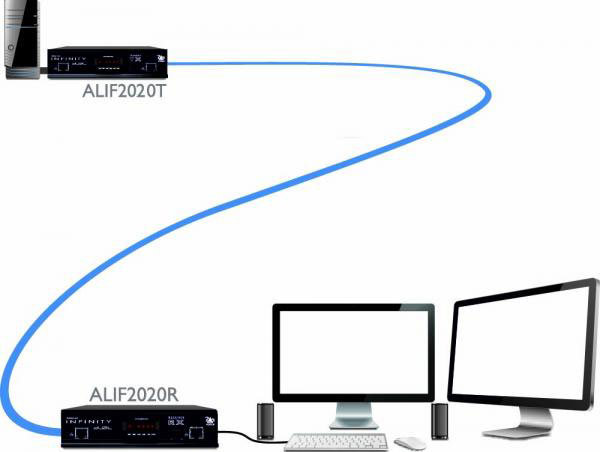KVM Over IP Guide

Define KVM Over IP
Remote Server Access (KVM Over IP) products are a new breed of non-intrusive hardware based solutions which allow you both in-band and out-of-band network access to all the servers connected to your KVM switch. Utilizing advanced security and regardless of operating system, these KVM Over IP products allow you to remotely control all your servers/CPU's - including pre-boot functions such as editing CMOS settings and power cycling your servers. KVM Over IP products allow you access via your internal LAN/WAN, and connectivity via the Internet or dial in access via ISDN or standard 56K modems. Access to the IP KVMs is secured with military grade network security.
Utilizing all these advanced features in conjunction is critical for remote maintenance, support, and failure recovery of data center devices.
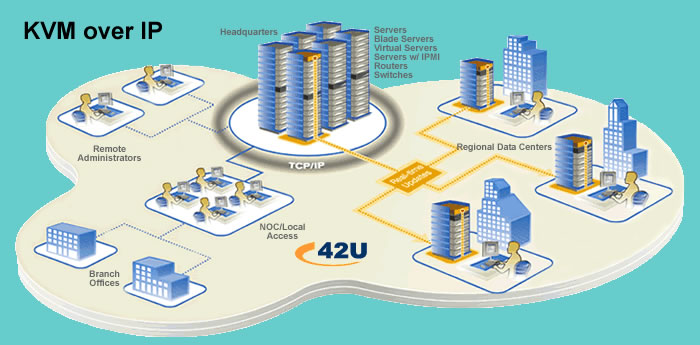
Reliable & Convenient Access
KVM Over IP devices are designed for quick intuitive access to multiple computers. IP KVMs offer in-band access and out of band access through a Web Browser, a VNC Viewer, or a Serial Console. IP KVMs also support integrating IPMI process managers like DRAC, iLO, and ILOM into your workflow.
Universal Compatibility
KVM Over IP devices are universally compatible with any Operating System such as Windows, Mac, Linux, and SUN. KVM Over IP is a hardware based solution for remote access - the unit plugs into the Keyboard, Video and Mouse ports of a computer or server and transmits those to a connected user through a network.
Lightning Fast
KVM Over IP devices are a light weight, low bandwidth solution for full quality remote access to computers and servers. Unlike remote access software like VNC and RDP, KVM Over IP only needs to transmit a copy of the cable signals. IP KVM devices are suitable for high bandwidth applications such as HD AV broadcast, games, graphics software, CAD applications, etc.
Military Grade Security
KVM Over IP devices feature advanced in band (LAN) and out of band (WLAN) security features including data encryption, remote Active Directory authentication through third party CA certificate, RADIUS, LDAP, LDAPS, MS, and other Active Directories, and configurable user and group access permissions.
True High Quality
Unlike remote access software, hardware-based KVM Over IP does not compress video leading to a loss of screen quality and false colors. KVM Over IP retains native resolution and will not stretch and scale the original video input source to fit the image to the connected monitor. IP KVMs are available in up to 4K @ 60Hz resolution.
Remote Access to USB
Virtual Media for IP KVM switches allows for the mounting of storage devices, CAC cards, printers, disks and ISO images over the network to the USB port of a computer. Virtual media is critical for the remote administration of a number of tasks from installing applications, patches, and complete operating installs to virus scanning and diagnostics.
Works In Any Application
KVM Switches Online offers a wide variety of KVM & Desktop Over IP solutions ranging from single device KVM Over IP Gateways to Enterprise level multi-user matrix solutions. Remote access to Computers and Servers can be used in any application from remote gaming, to working at home, to managing a kiosk, or sharing resources in a business, or HD audio-video broadcast, or accessing data during a military operation, or managing network cable boxes remotely - We've seen it all!
In-Band or Out-Of-Band Access?
KVM Over IP (Out-Of-Band)
Most KVM Over IP devices offer remote out-of-band access from anywhere in the world using a web browser or alternative protocol. KVM Over IP devices can be wired to a single server or computer with a KVM Over IP Gateway, or to KVM Switch with multiple sources that can easily be switched between.
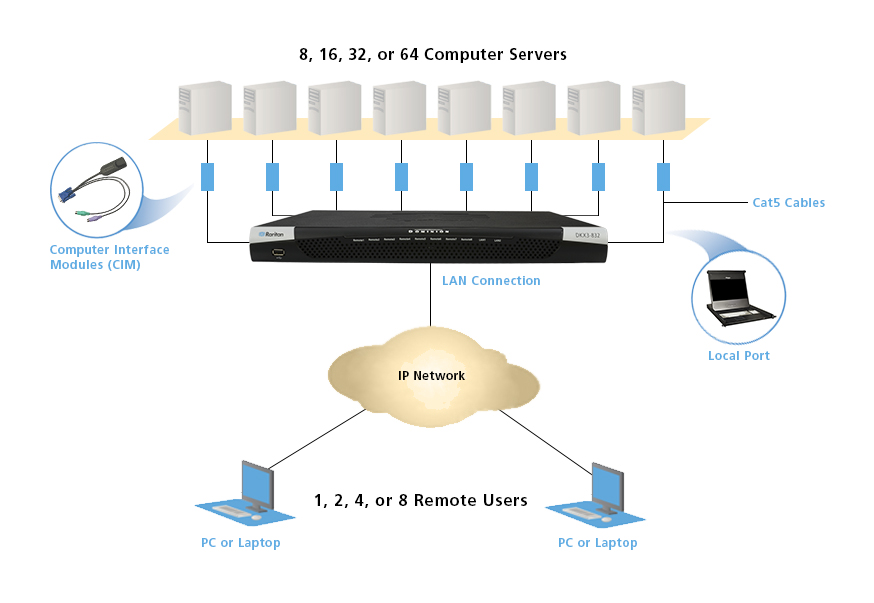
Networked KVM (In-Band)
Another type of IP KVM product is known as Desktop over IP. Desktop over IP is similar to a KVM extender solution, but is routed via the internal LAN/WLAN network to provide a true desktop experience in a point-to-point or point-to-multipoint configuration. This type of solution is very popular in the broadcast market, clean rooms, secure computing environments and many other solutions that require high resolution, USB peripheral flexibility or environments that you cannot simply run a Cat5 or fiber cable.
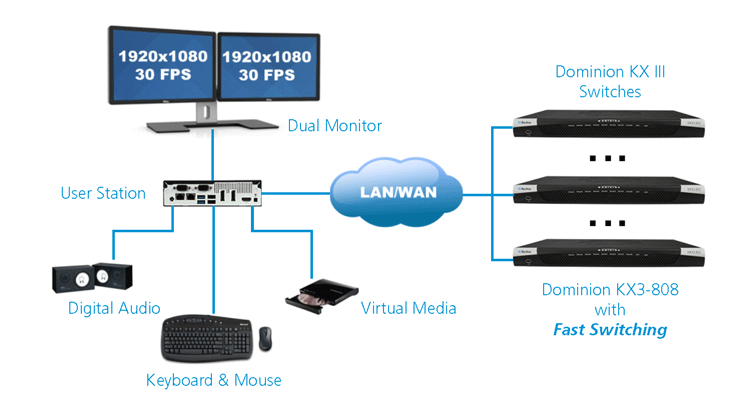

IP KVM Access

There are three typical ways to control devices connected to your KVM Over IP unit: through a web browser, through a VNC viewer (such as Real VNC), or through a serial connection (command line access only). In conjunction with the control methods, KVM Over IP devices can feature a variety of access technologies from SSH and Telnet, to Modem (Dial-Up, Cellular) and ISDN Link.
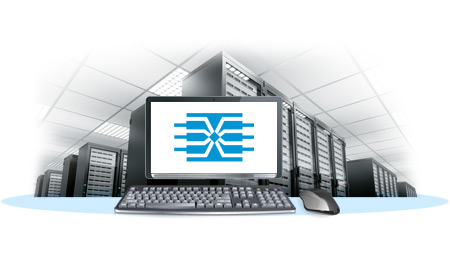
Web Browser Access
Most IP KVMs allow local (in-bound) and remote (out-of-bound) operators the ability to monitor and access their servers, storage, and network devices over the network using a web-based browser (Java or Javascript / HTTPS - IPv4, IPv6). Web based control methods employ high specification security techniques to ensure that only authorized users may gain access.

VNC Viewer Access
Real VNC (Virtual Network Computer) software was devised to enable users to access and control remote computers. An IP KVM switch with Real VNC protocol embedded into the security layer provides the benefits of both hardware and software based solutions - universal compatibility, superior graphical performance, and reliable BIOS level access together with encryption to assure the safety of your enterprise.

Serial Console Access (Command Line Only)
A lot of IP KVMs feature RS232, DB-15, Ethernet, or USB based Serial ports for managing external devices such as servers, switches, and IP routers through a command line interface (CLI). Serial Console access allows for text-based administrative tasks such as accessing the BIOS or boot loader, the kernel, the init system, or the system logger. Serial control requires very little IP bandwidth and can be especially effective in low bandwidth applications.
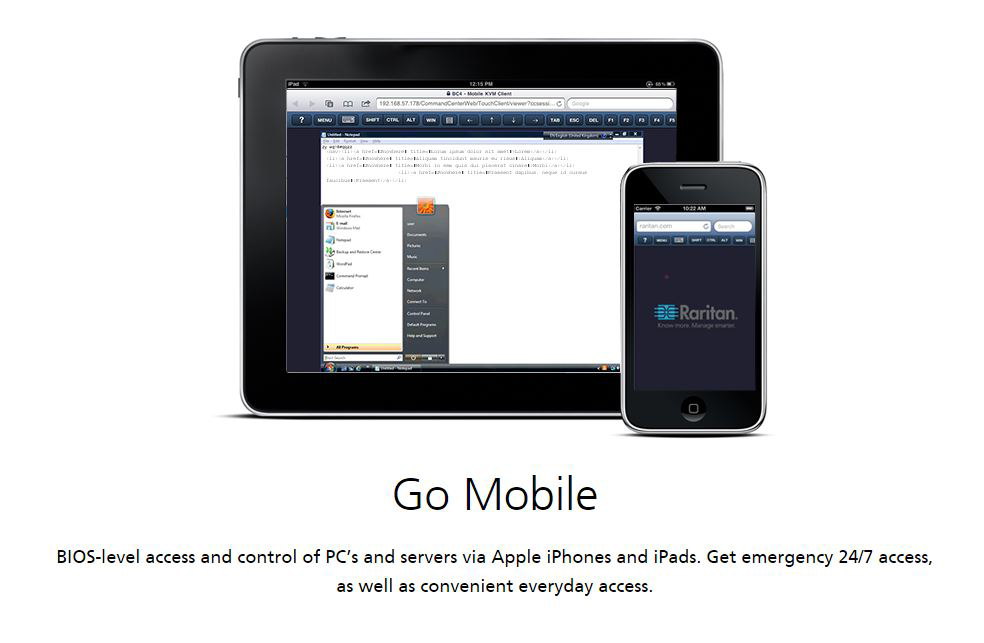
Mobile Phone & Tablet Access
A new breed of networked KVM-Over-IP switches are now being designed to allow users to easily control source computers / servers remotely over the internet from modern touch devices such as a tablet or a mobile phone. Access your IP KVM from a native iOS (iPhone / iPad) or Andoird (phone / tablet) VNC client or web browser!
IP KVM Types
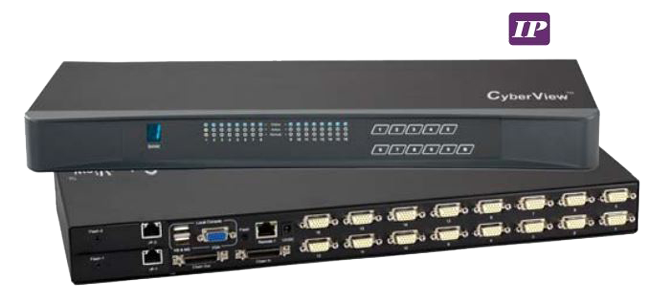
Standard
Standard IP KVMs are typically used in home, office & small business applications. Standard KVMs are wired directly to the target servers using integrated 3-in-1 KVM cables - separate connections on each side for the Keyboard, Video, and Mouse connections.
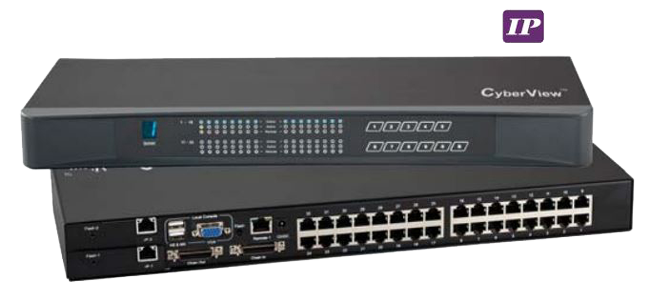
High Density (CAT 5/6/7, Fiber)
CATx / Fiber IP KVMs are ideal for high density, enterprise, long distance, and multi video format applications. They use external Computer Interface Modules (also known as CAM, CIM, or KVM Dongles) that connect directly to the KVM using standard low footprint CAT or Fiber cables. The CIMs include short external Keyboard-Video-Mouse cables that are plugged into the source servers.
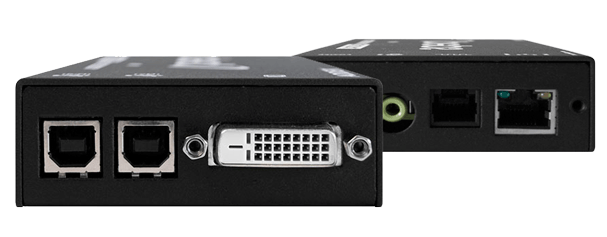
IP Gateways
KVM Over IP Gateways (also known as IP Extenders) are single port KVM over IP appliances - IP gateways offer convenient access to an individual target computer or a KVM switch with multiple computers attached. Gateways are perfect for IT administrators who need BIOS level access to branch offices, remote closets or where a direct cable connection to a KVM extender is not feasible. Multiple KVM over IP gateways can also be used for 1:1 access to a bank of servers or workstations when simultaneous access is required by one or multiple individuals, or in a NOC environment when viewing multiple systems is desired.
Ports & KVM Cascading
The amount of ports determines the amount of computers or servers that can be connected to an IP KVM. Each port supports a single device.
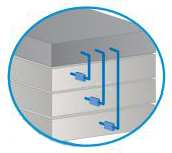
Most IP KVMs offer the ability to expand the amount of connected devices by chaining two or more KVM switches together (known as Cascading or Daisy Chaining). Cascading typically requires KVMs to be from the same product family, or to be the same unit. Some switches allow you to remote into all the chained KVMs from one designated 'master' KVM. Please note, in some cases a device port is used for each cascaded KVM switch that is added.
When choosing the amount of ports, it is advised to consider any future expansion plans. We typically suggest to oversize your KVM as it is cheaper than getting a new switch.

Concurrent Users
One of the most important questions when considering a IP KVM switch is how many users need to be able access any of the connected servers / PCs at once.
Multi user IP KVMs allow non-blocking access for multiple users to any of the attached devices. Security settings can be set individually for each user, or globally for all the users. Please refer to KVM Over IP Security for more on user settings.
Please note: Due to limitations in Win, MAC, Linux, and SUN systems, only one person can control the keyboard and mouse of an individual PC at a time. However multiple users can still typically view and take turns controlling the same PC.

Video Connections
KVM Over IP switches can support a variety of Digital and Analog video connector types. Video support is dependent on the switch - some IP KVMs offer support for VGA, DVI, HDMI, and DP simultaneously, while others may only support VGA.
Digital Video Cables: DVI-I, DVI-D, HDMI, DisplayPort
Analog Video Cables: VGA, DVI-I, DVI-A, DisplayPort-A
The main thing to consider for the type of video your KVM Over IP switch needs to support is what type of video do your servers / PCs output, and what type of video will any future servers / PCs output. Unlike with standard local KVM switches, you do not need to consider what signal your monitor supports because you will be connecting to the IP KVM through a separate PC.

Multi Monitor
While there are some Dual-monitor IP KVM solutions are available, KVM Over IP switches also generally offer unrestricted multi monitor support for any number of monitors. Multi monitor support can be achieved by using a separate port for each of attached displays, and then opening those in separate sessions - For example, a 32 port KVM would offer support for 16 devices with dual monitors. Some IP KVMs such as the Raritan Dominion KX3 also offer native a multi monitor 'follow' mode, which automatically opens up all the relevant displays when connecting to a server.

USB or PS2 for Keyboard & Mouse?
With most modern human interface (HID) devices being standardized on USB and with the availability of reliable and cost effective USB to PS2 adapters, the question of PS2 or USB has become largely irrelevant. However, if you have any legacy PS2 devices like keyboards or mice, please consider procuring a native PS2 KVM or discarding those devices.
- All newer USB standards (2.0, 3.0, 3.1) are backwards compatible to USB 1.0,
- USB to PS2 adapters, like the Adder KMU2P, are reliable, cost effective, and readiy available.
- PS2 to USB adapters are available but not recommended; signal conversion issues are common.
Virtual USB Media
Virtual Media lets the user remotely mount storage devices, CAC readers, printers, bootable ISO, and any other USB devices onto the computers and servers connected to the KVM Over IP switch. The networked USB device functions as if it was directly attached to the source computer or servers USB port.

Virtual USB media is also critical for remote administrators to perform of a number of tasks from installing applications, security patches, complete OS installs, to virus scans and diagnostics. These tasks can often be performed simultaneously on all servers attached to the KVM switch without a physical presence in the server room.
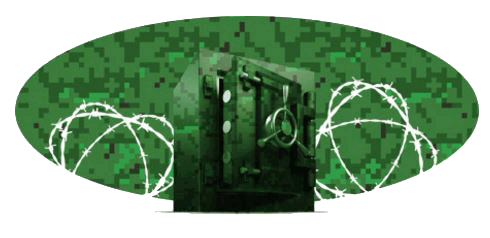
Security
Modern KVM over IP gateways and switches typically use at least 128-bit data encryption securing the KVM configuration over a WAN or LAN (using SSL). They also typically support remote authentication through third party CA certificate, RADIUS, LDAP, LDAPS, MS, and other Active Directories. Configurable user and group permissions for server access and control, make security for remote access a breeze. Flexible encryption design allows users to choose any combination of data encryption settings for Virtual Media and other data transmission.
Security features vary from product to product. For more information on specific security features, please refer to the respective product page. Due to the fundamental nature of KVM Over IP, switches and gateways cannot be EAL / NIAP certified. For secure government certified KVM switches please see our Secure KVM page.

User & Group Permissions
KVM Over IP devices allow administrators to define users and groups with customizable administration and port access permissions. Admins can typically choose between View only, Shared, Exclusive or Private connection modes.

Active Directory Authentication
A lot of KVM Over IP units also allow for third party authentication and authorization through Active Directory services like LDAP, AD, RSA SecurID, RADIUS and TACACS+. Access and control based on user-customizable criteria like time of day, location, application, operating system, department and function. Active Directory also allows for consolidated logging and audit trail.
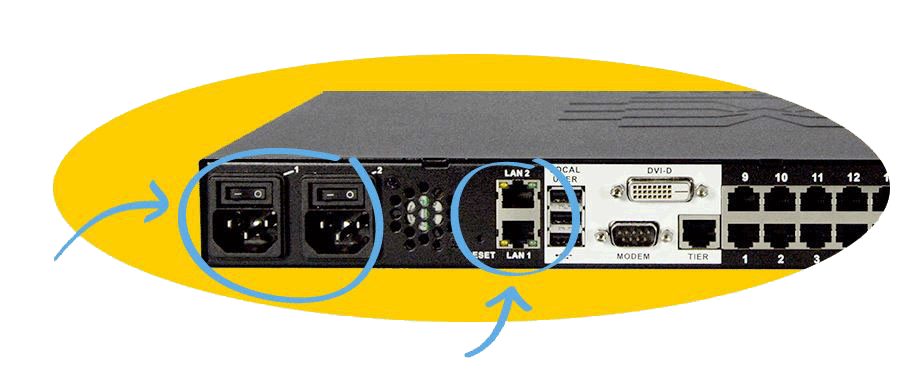
Redundancy
Network (NIC/Ethernet) Redundancy
One of the benefits of KVM Over IP switches compared to remote access software is reliable 24/7 access to computers and servers, regardless of the state of the connected devices. KVM switches with Dual NIC (otherwise known as Dual Ethernet) include two network input ports - if the primary network source becomes unavailable, the device will seamlessly switch to the secondary source.
Dual-AC Power Redundancy
The mean cost of unplanned data center downtime is $8,851 per minute across industries.1 In a recent data center survey, 95% of participants said they experienced one or more unplanned outages in the past 24 months - with the average incident lasting between 86 minutes and 119 minutes.2 One of the most common causes for downtime is power outages.1
Dual input power redundancy (Dual-AC) is a critical component of any mission critical system. In a fail-safe dual-AC system, if the primary power source becomes unavailable, the device will seamlessly source power to the secondary source without interrupting critical loads.
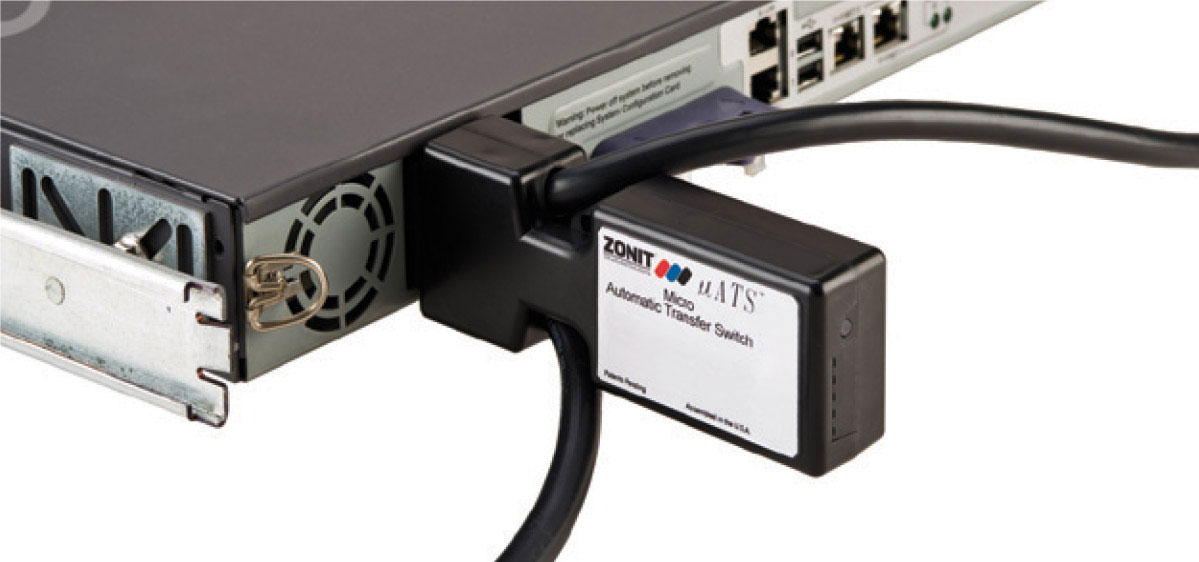
Some enterprise level KVM Over IP switches, such as the Raritan Dominion KX3, offer Dual-AC as a feature. Most other KVM switches can also be made Dual-AC by using a cost-effective one device Automatic Transfer Switch (ATS).
Remote Reboot Power
A critical part of remote management is the ability to reboot devices critical for maintenance, support, or failure recovery. A data center manager will also need to be able access the BIOS and CMOS settings of a server. These tasks can be rigorous without local support staff or easy 24/7 access to the building.
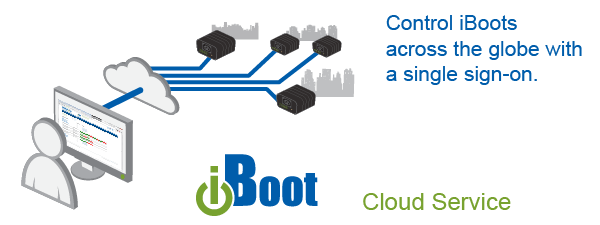
Remote reboot ability can be added to any KVM Over IP switch using a cost effective Remote Power Control unit.



